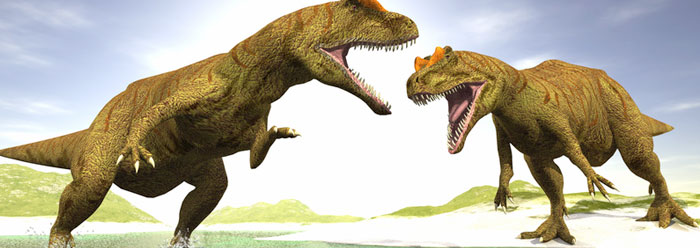The blockbuster movie, "Jurassic Park," has captured the nation's fancy this summer, backed by an extensive media campaign. Central to the movie is the idea that mosquitoes, living in the Jurassic period (some 155 to 200 million years ago according to the evolutionist) were entombed in amber (fossilized tree resin) after having bitten dinosaurs. The dinosaur-blood DNA was so well preserved that scientists could clone living dinosaurs!
Is this a possible scenario? It must first be recognized that cloning successes have been realized only within living species. The best results reported are when the nucleus is removed from a female's egg cell, and the nucleus (which contains the DNA) from another type of cell of a different individual of the same species is substituted. On occasion, the embryo grows, following normal development, but frequently the offspring is badly malformed. Among the requirements for success is that the egg and the substituted DNA be from the same species, and that the growth must occur within an egg cell.
Advances in this field have been spectacular, and much research is still going on. Breakthroughs are perhaps forthcoming which will produce more significant results, but as of yet, cloning of large animals remains science fiction.
The next question to be addressed, Is it possible for DNA to be preserved for a long period of time? Some recent discoveries do hint of this. Fossilized leaves and trees have been found which contain remnants of DNA, and tiny remnants of DNA from insects trapped in amber have been extracted, but the entire DNA sequence has never been observed in fossils.
Recent laboratory studies (Nature, vol. 352, 1 August 1991, p. 381) have shown that DNA will break down all by itself. Without the repair mechanism of a living cell, it self-destructs at a rapid rate. Under even the most favorable conditions, it could not remain beyond 10,000 years or so (at least this is what true scientific observations show, as opposed to scientific speculations or science fiction).
The last question: How old are these fossils, and how old is the "dinosaur blood?" The fossil leaves, trees, and insects are thought to be millions of years old, and pose a dilemma for science. The preservation of DNA for so long goes against the observed and measured DNA-breakdown rate. And dinosaurs? All scientists whose articles I have read have agreed that the idea of dinosaur DNA remaining intact in a complete-enough state for cloning will always remain a fairy tale. No advances in technology are likely ever to bridge that gap.
The creation/flood/young-earth model involves a different set of parameters. In this model, the fossils aren't so old, and were rapidly buried—conditions optimum for preservation. Even post-flood fossils aren't so old, but complete DNA molecules would still be extremely unlikely.
So, in order to clone dinosaurs, we need perfectly preserved and complete dinosaur DNA (which we don't have), and a living mother dinosaur to provide the living egg cell (which we also don't have and aren't going to have). The point is, don't lose any sleep over cloned dinosaurs!
You might be more concerned with the scientific community. How long will they continue to allow Hollywood to use fairytale just to promote evolution?
*Dr. John Morris is the President of ICR.













